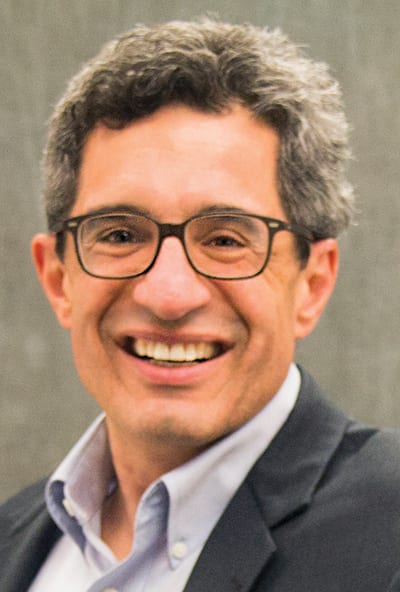Why can’t utilities be more like Netflix or Amazon? It’s a question you see posed in a growing number of articles and analyst reports, arguing that utilities should be more customer-centric and quicker to adapt to new technologies.
But I’ve got a different question for you: would you really want your utility to be like Netflix or Amazon?
Imagine you want to cook dinner. A weak flame clings to life on your stove; “17% – Still Buffering,” says the screen on your top-of-the-line smart range-cooker, before it’s suddenly flame-on. Or let’s say you’re experiencing a power outage: do you want to speak to someone in the 24-hour situation room on the phone, or have Alexa serve up ‘Blackout’ by Breathe Carolina?
If you think about all of the behind-the-scenes processes and conveniences of daily life, and how they can go wrong or fall victim to a company trying to save a few pennies by putting everything in the cloud, you already have a pretty good handle on why the market for edge computing is a hot topic.

What is the edge? It’s a strategy for handling particular tasks locally, or at least outside of large, centralized cloud-based data centers. A distributed architecture can increase hardware costs, but will lower bandwidth costs. However, more importantly, local computing can generate the benefits of IIoT more easily.
For instance, in 2017, Newmont Goldcorp started providing live, real-time data about ore grades and other factors to its plant operators so it could adjust the chemical baths that leech metals out of tons of rock. It was able to give employees the ability to adjust on the fly, adding the equivalent of 4.5 days of production per month.
Could it have been done in the cloud? Probably. Did it make more sense to do it locally on the edge? Yes.
Gartner predicts that the amount of data created or processed outside of traditional or cloud data centers will grow from 10 per cent today to 75 per cent by 2025. But the rise of edge computing doesn’t mean the cloud is going away.
The companies currently providing cloud hosting services or analytics will likely develop edge versions of their services while traditional industrial technology companies make their solutions easier to integrate into cloud architectures.
In the end you’ll have a blend, but the main difference between a cloud application and edge computing is what makes sense to do where. You can see an early example of this blending at TransCanada, where cloud-based analytics are used to fine-tune demand forecasting. These cloud-based demand forecasts are then modified at the local level to suit particular circumstances or shifting trends.
“5G may take the sting out of broadband costs. Experience with the first wave of IoT will pave the way for centralizing many functions that fit more comfortably on a local level. But then the complaints will begin.”
– Michael Kanellos, Technology Snalyst, OSIsoft
In some ways, the recent rise of the edge is just the latest oscillation in the tug of war between distributed and centralized architectures that has been going on for decades. Companies migrated from adding machines to mainframes in the 1950s because the new machines gave them an ability to tackle large, unassailable problems.
In the 80s, PCs chipped away at mainframes because they freed employees from the tyranny of the glass house. With the rise of online shopping and search engines, centralized computing roared back.
Then came the ‘internet of things’. The business cases for industrial IoT (IIoT) and IoT are already proven. IIoT will have an outsized impact on improving safety, productivity and energy efficiency over the next several decades.
Things, however, also generate an outsized amount of data. By 2021, IDC estimates that things will outnumber people on the internet and by 2025, approximately 30 per cent of the world’s data will be real time data. Edge will grow because it will represent the most economical way to make sense out of and use this body of information.
Edge also has the edge, so to speak, because no two facilities are the same. Plants work because employees have developed a hard-earned tribal wisdom about their personality quirks.
In Australia, the utility TasWater developed its own system for predicting sewage overflows, and thereby avoiding hurting nearby oyster beds. The system was implemented rapidly in part because their developers were also long-time employees who understood what the cisterns and flow meters were telling them. A top-down, cloud-first approach may not have worked as well.
Will the love of local computing last? 5G may take the sting out of broadband costs. Experience with the first wave of IoT technologies will pave the way for centralizing many functions that fit more comfortably on a local level. But then the complaints will begin; 1.5 seconds is just too long to have to wait for an analysis of a data stream.
Michael Kanellos, as technology analyst at OSIsoft, tracks how innovation and IoT will impact energy, people and business. He’s written for over 20 years for CNET, Greentech Media, Forbes, Wired, Computer Reseller News, the New York Times and other publications and appeared as a guest on outlets like NPR, 60 Minutes, Fox News, CNN, the Today Show and Al Jazeera. Prior to technology, he also worked as an attorney, a Census Bureau enumerator and a busboy in a pancake house. You can reach him at mkanellos@osisoft.com.

